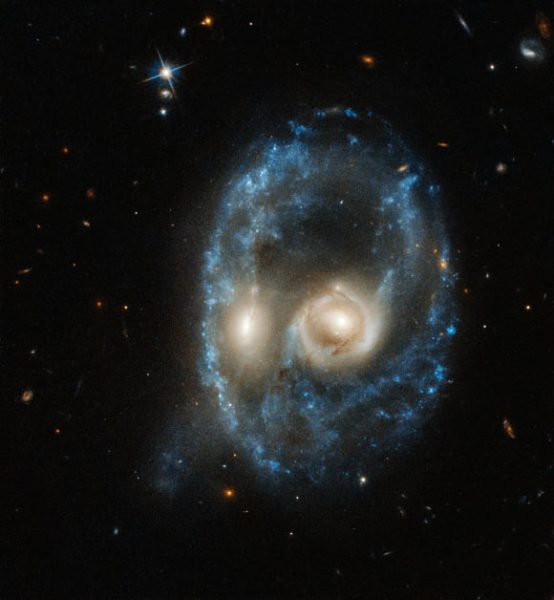Hubble Spots Stunning Ring Galaxy System | Astronomy – Sci-News.com
NASA has released a breathtaking image snapped by the NASA/ESA Hubble Space Telescope of the Arp-Madore 2026-424 system.

This Hubble image captures two galaxies of equal size in a titanic head-on collision. This observation was made on June 19, 2019 in visible light by Hubble’s Advanced Camera for Surveys (ACS). Image credit: NASA / ESA / Hubble / J. Dalcanton, B.F. Williams & M. Durbin, University of Washington.
Arp-Madore 2026-424 is located some 704 million light-years from Earth in the constellation of Microscopium.
Also known as ESO 285-19, it is actually the result of a titanic head-on collision between two galaxies of equal size.
The violent encounter gives the Arp-Madore 2026-424 system an arresting ring structure for a short amount of time, about 100 million years.
The two galaxies will merge completely in about 1 to 2 billion years, hiding their messy past.
“Ring galaxies are rare, and only a few hundred of them reside in our larger cosmic neighborhood,” the Hubble astronomers explained.
“The galaxies have to collide at just the right orientation so that they interact to create the ring, and before long they will have merged completely, hiding their messy past.”
“The side-by-side juxtaposition of the two central bulges of stars from the galaxies in Arp-Madore 2026-424 is also unusual.”
“Since the bulges that form the ‘eyes’ appear to be the same size, we can be sure that the two galaxies involved in the crash were of equal size.”
“This is different from the more common collisions in which small galaxies are gobbled up by their larger neighbors.”




